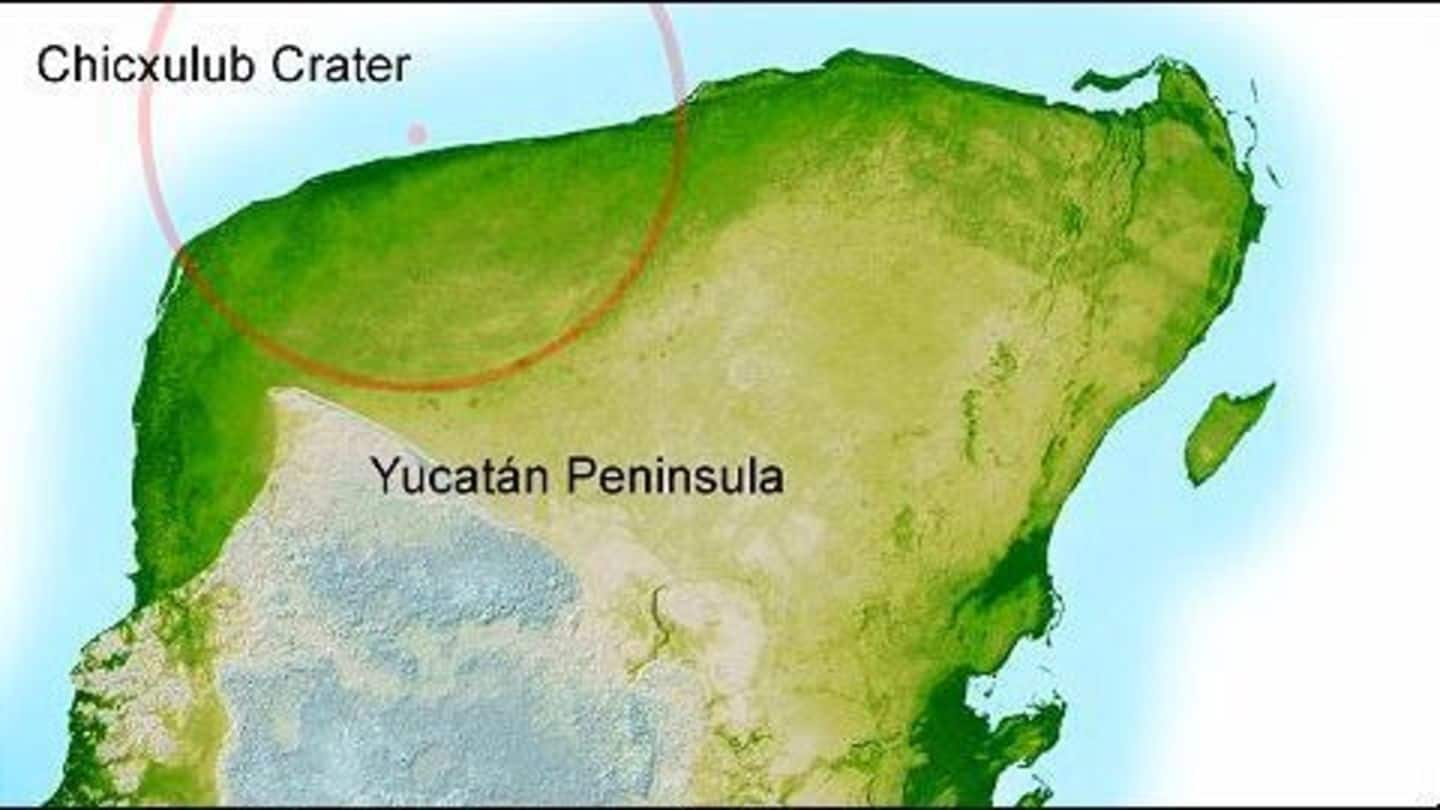
Chicxulub 'Dino' Crater drilling project declared successful
What's the story
A UK/US-led team declared that the attempt to drill into Mexico's Chicxulub Crater has been an outstanding success. The team had cored into the deep 66-million-year-old crater for seven weeks and pulled up rocks from at least 1,300 meters below the Gulf seafloor. The collected rock samples are expected to throw light on the level of impact and its effects on the environment.
Introduction
What is the Chicxulub Crater?
The Chicxulub Crater on the coast of Mexico is an impact crater that is buried deep below the Yucatán Peninsula. Around 66 million years ago, an asteroid called 'Chicxulub impactor', caused the hole that is 100 kilometers in diameter and 30 kilometers in depth. The diameter of the space object that hit the Earth's surface is believed to be at least 18 kilometers.
Personal
Third largest confirmed impact structure
Chicxulub Crater is the third largest impact structure on Earth that has been confirmed. It was discovered by geophysicists–Antonio Camargo and Glen Penfield during the 1970s when they were searching for petroleum.
Lunar Twin
Strikingly similar to Schrödinger Crater on moon
The Chicxulub Crater is dubbed as the 'Lunar Twin' because of its striking resemblance to the Schrödinger crater on the farther side of the moon. The asteroid penetrated deep below the Earth's surface digging a hole in such a way that the excavated material bounced back to form a ring. These features are buried deep underwater, below the sediments, millions of years old.
Cretaceous Period
Crater lead to the extinction of several creatures
The asteroid is believed to have slammed into Earth in the 'Cretaceous Period' leaving a 200-km wide and 30-km deep crater. According to scientists, the debris caused by the impact would have darkened the sky and decreased the temperatures for several months together. Scientists believe that because of the after effects of the space impact, dinosaurs and several other creatures were driven to extinction.
Timeline
Link between crater and dinosaurs confirmed
2010: An expert-panel confirmed that a space impact caused the mass extinction of dinosaurs. 2011: Proposal to study the Chicxulub Crater by drilling 1.5-km deep into the sea was suggested. 2013: Scientists first established that the dinosaurs died out about 66,038,000 years ago. 5 Apr'16: As a part of the International Ocean Discovery Program (IODP), the project to drill into the crater went underway.
Original Target
Original target couldn't be reached
According to project officials, the target originally was to drill 1,500 metres into the crater through the 'peak ring'. The 'peak ring' is located in the centre of the crater's impact hole, where the Earth is believed to have rebounded after being hit by the massive asteroid. The original target couldn't be reached, but rock samples from the 'ring' were collected.
Quote
Very much pleased with the quality of cores
Dave Smith–Project's Operations Manager, said: "We're all really chuffed about the almost 100% core recovery and the quality of the cores we've been getting up. It's been a remarkable success. We've got deeper than I thought we might do."
Scans, Tests
Rock samples to be subjected to several tests
The collected rock samples were encased in metal and stored in a refrigerated container. These rocks would be transported back to the land and sent for CT scanning to examine their interior structure in the US. Later, they would be taken to the Bremen city in Germany where the current science team's 33 members would conduct several tests on the rocks.
Quote
Cores to be archived
The Project's Co-chief Scientist said, "The cores go to a facility in Texas where anybody can then sample them. If someone has a new geochemistry measurement, they can go look at the core for a long, long time into the future."